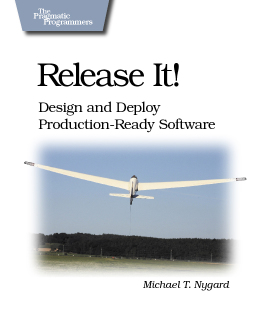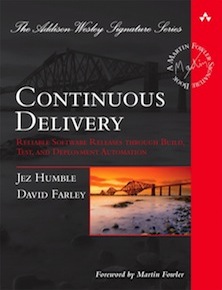Designing and Developing Software for Operations
Will Thames (@willthames)
25 July 2014
Introduction
Setting the scene
- 2+ years at Suncorp (2012–)
- ~8 years at Betfair (2003–2011)
A little about Betfair
- Betting exchange — the complicated bit is matching gamblers on both sides of the bet.
- I left in 2011. Much will have changed.
- 150+ applications, not that many of which ‘looked’ the same
- 1000s of transactions per second, all of which were supposed to complete in less than a second
- 1000s of servers across multiple DCs
Genuinely 24x7, highly transactional environment with low tolerance for downtime.
A terrible weekend
Microservices have to be carefully considered.
A set of cascading failures across a suite of microservices contributed to doing 30+ hours of oncall in a single weekend.
We came up with a checklist of operational requirements, dozens of which were failing on each service.
This is a distillation of learnings from that time!
And Suncorp
The applications I support are typically provided by third parties, and so making them more supportable is hard. But that’s what support tickets are for.
Or public education…
Overview
Contents
- Discoverability
- Configurability
- Observability
- Resiliency
- Further reading
Scope
- Mean Time between Failures (MTBF) — not so much of this
- Mean Time to Recovery (MTTR) — more of this
- With some emphasis on software delivery
Discoverability
Standards

Adages
- Comment your code for the poor unfortunate person who ends up reading it in six months time — it could be you.
- Design your software for the poor unfortunate person who gets called up at 3am. In a devops world it could be you.
Standards
No support team should have to guess how software is set up. Have organisational standards that declare:
- How software is installed (chef, puppet, ansible, salt, cfengine — just pick one)
- Where logs live
- Where configuration comes from, and what the current configuration is
- How to stop, start, interrogate status of an app
Configurability
Configuration Management
- Terrible: configuration as part of the deployable
- Good: separate configuration files read at startup
- Best if well managed (change auditing etc): runtime configuration read from a service (e.g. etcd, zookeeper) or DB
The configuration monolith
- Bad: one giant configuration file containing everything from license keys and authentication tokens to configuration.
- Worse: these configuration files updated by user interaction at runtime.
- Better: Configuration files tied to a particular purpose, in an easily templated fashion (think linux conf.d structures)
Special mention for this beauty buried deep in a file that changes every version:
<!-- Uncomment this to enable this particularly useful configuration
<some>
<arbitrary>
<xml>Make stuff work here</xml>
</arbitrary>
</some>
-->Particularly difficult to template or remove specific lines in a way that works across releases
Observability
Logging
- Configure log rotation on a schedule
- Log in an unchanging timezone (UTC, or Australia/Brisbane rather than Australia/Sydney)
- Logs should have a single specific purpose
Application logs
- Exceptions should be exceptional.
AuthenticationExceptionwhen a user mistypes their password is NOT exceptional — don’t log a stack trace for it — put it in an audit log if need be! - Know your log parsing tools — writing information as key=value pairs will save you from having to write custom parsers.
- Transaction IDs are great for tying together multiple logs, especially if you can get them in your access log too.
Access logs
- Access logs should contain the obvious (URL, status code, timestamp etc)
- Less out of the box, log: response time, user ID and actual IP address — i.e. if it comes through a proxy or load balancer, log
X-Forwarded-Foror similar, not the intermediary IP. - Be careful of timeouts — not all long running requests make it to the access logs.
- If you can’t use a widely-used access log format, make your access log format standard across your organisation.
Health status pages
- Health status pages can be used by loadbalancers and humans
- Make your loadbalancer checks be as complete as possible (test connections to critical integration points)
- Make your loadbalancer health checks be as quick as possible
- Have a separate more verbose healthcheck page if need be containing status of DB connections, queue lengths, request counts etc.
- Allow the healthcheck to recalculate regularly(!!)
Resiliency
Fail safely
- Fail gracefully where possible. Know your failure scenarios!
- Fail fast — don’t block threads or other scarce resources for long periods
Recovery
- When a healthcheck fails due to a dependency failure, ensure that that dependency recovering means that the healthcheck to recover
- Ensure a service can start even in the absence of any dependencies. It might not be healthy (and if not should fail its healthchecks) But it should recover when the dependency recovers.
Further Reading
Release It
Michael Nygard wrote the book on making software operable. 
Continuous Delivery
Jez Humble and Dave Farley regularly makes the point that configuration management is one of the foundations of Continuous Delivery and have some great advice:

Building Microservices
In Doing microservices right, Sam Newman talks about how to avoid some of the common pitfalls of microservices. Building Microservices is currently in Early Release.
